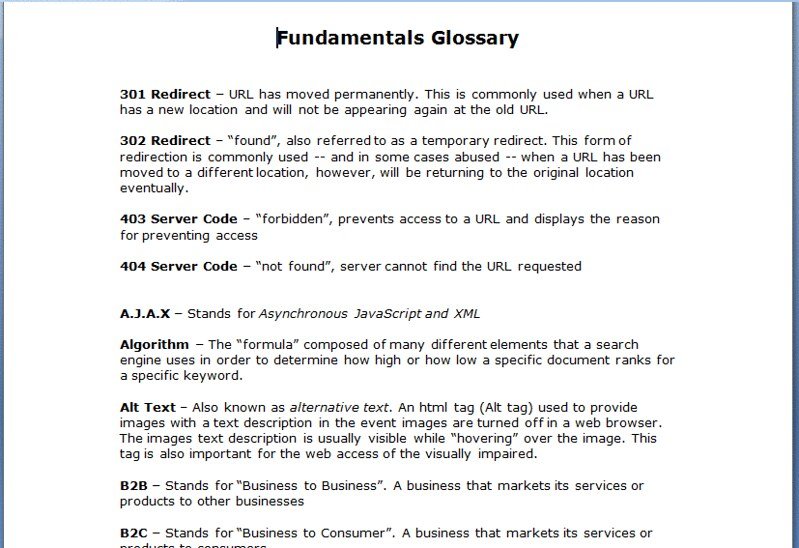Can you hear that faint whisper in the digital abyss? It’s the sound of web developers and SEO experts murmuring about a mysterious code: 302. Hushed conversations surrounding its powers have been circulating in the shadows. But fear not, dear reader, for today we embark on a journey to unravel the enigma of the Redirect Riddle – the hidden gem that can truly amp up your SEO game. So, fasten your seatbelts as we delve into the world of 302 redirects, demystifying their potential and unveiling the secrets they hold for your website’s optimization success. Get ready to unlock the power of 302 and watch your SEO soar to new heights!
Table of Contents
- Unraveling the Mystery Behind 302 Redirects: Understanding the Impact on SEO
- Maximizing SEO Potential: Harnessing the Power of 302 Redirects
- Unleashing the True Potential of 302 Redirects: Proven Strategies and Expert Tips
- Mastering 302 Redirects: A Comprehensive Guide to Enhance Search Engine Optimization
- Q&A
- In Conclusion

Unraveling the Mystery Behind 302 Redirects: Understanding the Impact on SEO
302 redirects can be a mysterious aspect of search engine optimization (SEO). They are often overlooked or misunderstood by beginners. But fear not, as we are here to unravel the secrets behind these redirects and help you understand their impact on your website’s SEO.
So, what exactly is a 302 redirect? Think of it as a temporary detour sign that guides users and search engines to a new location temporarily. Unlike a 301 redirect, which indicates a permanent move, a 302 redirect is a temporary redirect. It tells search engines that the original page has temporarily moved to a different location. The key here is the word “temporary.”
Now, let’s dive into the impact of 302 redirects on SEO:
- Effect on link juice: A 302 redirect doesn’t transfer link equity to the redirected page like a 301 redirect does. This means that any link authority, also known as link juice, associated with the original page will not pass to the temporary redirected page. So, keep in mind that using a 302 redirect can have an impact on the SEO value of the redirected page.
- Indexing changes: When search engines encounter a 302 redirect, they treat it as a signal that the original webpage is temporarily moved. As a result, search engines don’t immediately update their index and continue to show the original URL in search results. This can lead to confusion for users and impact the visibility of the redirected page.
- User experience: From a user perspective, encountering a 302 redirect can be frustrating. Imagine you’re searching for specific content, click on a search result, and end up on a different page than expected. To enhance user experience, it’s generally recommended to use 301 redirects for permanent moves, as it ensures users are taken directly to the new page they’re expecting.
By understanding the impact of 302 redirects on SEO, you can make informed decisions when implementing redirects on your website. Keep these considerations in mind to ensure optimal SEO performance and a positive user experience!

Maximizing SEO Potential: Harnessing the Power of 302 Redirects
One powerful tool that many beginners overlook when it comes to maximizing their SEO potential is the strategic use of 302 redirects. These redirects can be a game-changer in boosting your website’s visibility and overall performance on search engine result pages (SERPs). Understanding the ins and outs of 302 redirects can be the key to unraveling the redirect riddle and taking your SEO game to the next level.
Here are some reasons why 302 redirects are crucial in your SEO arsenal:
1. Flexibility: Unlike permanent 301 redirects, which is like a one-way ticket, 302 redirects offer flexibility by allowing you to temporarily redirect a page. This means that you can guide your website visitors to a different page for a specific period without affecting the original URL. It’s like directing the traffic to a temporary detour before ultimately leading them back to the main road.
2. A-B Testing: Suppose you have two versions of a landing page and want to compare their performance in terms of SEO. Using a 302 redirect, you can direct a portion of your traffic to one version and another portion to the alternative version. By monitoring the results, you can identify which version performs better and make data-driven decisions to improve your website’s overall performance.
Unleashing the True Potential of 302 Redirects: Proven Strategies and Expert Tips
302 redirects can be a powerful tool in your SEO arsenal, yet many beginners are unsure of how to utilize them effectively for optimal results. Fear not, for we are here to unravel the redirect riddle and unlock its true potential. With these proven strategies and expert tips, you’ll be able to harness the power of 302 redirects and amp up your SEO game like never before.
1. Understand the Difference: Knowing the dissimilarity between 302 redirects and their 301 counterparts is crucial. While both redirect types serve the purpose of directing users from one URL to another, 302 redirects are temporary in nature. They indicate that the original URL is only temporarily unavailable, and search engines should continue to index it, unlike 301 redirects that suggest a permanent move.
2. Harness Temporary Changes: One of the key advantages of 302 redirects is their temporary nature, making them perfect for situations like website maintenance, A/B testing, or seasonal promotions. By using a 302 redirect, you can seamlessly direct users to an alternative URL without disrupting the indexing of the original page. This flexibility allows you to experiment and make adjustments without fear of permanently impacting your SEO efforts.
3. Preserve SEO Value: Unlike with 301 redirects, where the SEO value of the original URL is often transferred to the new one, 302 redirects maintain the SEO value on the initial page. This can be advantageous when you want to preserve the ranking of the original page while temporarily directing users elsewhere. However, keep in mind that this means the redirected page won’t accumulate SEO value, so use 302 redirects judiciously to achieve your SEO goals while still maintaining the original URL’s search engine ranking.
In conclusion, understanding and utilizing 302 redirects effectively can be a game-changer for your SEO efforts. By comprehending their purpose, benefits, and best practices, you have the power to make temporary website changes, maintain SEO value, and provide a seamless user experience. So, unlock the true potential of 302 redirects and watch your SEO strategy soar to new heights.
Mastering 302 Redirects: A Comprehensive Guide to Enhance Search Engine Optimization
302 redirects are a vital tool in the world of search engine optimization (SEO). In this comprehensive guide, we will unravel the redirect riddle and show you how to use 302 redirects to enhance your website’s SEO performance. Whether you’re a beginner or someone looking to expand their knowledge, this guide will provide you with valuable insights and useful tips to implement 302 redirects effectively.
So, what exactly is a 302 redirect? Simply put, it is a temporary redirect that sends users and search engines from one URL to another for a specified period. Unlike its permanent counterpart (301 redirect), a 302 redirect indicates that the move is only temporary, and the original URL may be back in action at some point. This makes 302 redirects a powerful tool when you need to redirect traffic without losing the original URL’s rankings in search engine result pages (SERPs).
Harnessing the power of 302 redirects can significantly impact your SEO efforts. To help you master this redirect technique, we will delve into its benefits and drawbacks, providing you with a comprehensive understanding of when and how to utilize 302 redirects effectively. With practical examples and best practices, we’ll equip you with the knowledge to optimize your website’s SEO performance using 302 redirects. So, buckle up and get ready to unravel the redirect riddle for SEO success!
Q&A
Q: What exactly is the “Redirect Riddle” all about?
A: The “Redirect Riddle” refers to the use of 302 redirects in SEO practices to enhance website rankings and user experience.
Q: How does a 302 redirect differ from other types of redirects?
A: Unlike a permanent redirect (301), which is used when a page has permanently moved, a 302 redirect is temporary and indicates that a page has temporarily moved to a different location.
Q: How can using 302 redirects amp up SEO?
A: By strategically using 302 redirects, website owners can safely test different landing pages and variations to optimize conversion rates without running the risk of negatively impacting their search engine rankings.
Q: Can you provide an example of when to use a 302 redirect?
A: Let’s say you’re running an e-commerce website and want to test two different product pages to see which one generates more sales. You can use a 302 redirect to temporarily direct half of your traffic to one page and the other half to the other page.
Q: Are there any limitations or potential downsides to utilizing 302 redirects in SEO?
A: While 302 redirects offer flexibility and convenience, it’s important to note that search engines might not treat them consistently. Some search engines may treat them as 301 redirects, potentially affecting the intended test or modification.
Q: Is there a specific process to implement 302 redirects effectively?
A: Yes, it’s crucial to adhere to specific best practices. For instance, setting an appropriate cache time with the 302 redirect can help ensure that search engines understand the temporary nature of the redirect. Additionally, closely monitoring your website analytics is essential to assess the impact and effectiveness of your redirect strategy.
Q: Can 302 redirects be used exclusively for SEO purposes?
A: No, 302 redirects have various applications beyond SEO. They can be employed for temporary maintenance pages, A/B testing, or even event-specific landing pages.
Q: How can website owners stay updated on any changes or developments regarding 302 redirects in SEO?
A: It’s advisable to follow reputable SEO blogs and industry experts who regularly publish informative content. Additionally, staying informed through Google’s official sources, such as their Webmaster Central Blog, can help keep website owners up-to-date on any updates or changes related to redirects and SEO practices.
Q: What are some key takeaways for website owners looking to utilize 302 redirects?
A: Remember that 302 redirects can be a valuable SEO tool when used correctly. Ensure you understand the differences between 302 and 301 redirects, monitor performance using analytics, and stay informed about any developments or changes in search engine algorithms that may affect your redirect strategy.
In Conclusion
As we come to the end of this mind-boggling journey of unraveling the ins and outs of the mysterious 302 redirect, we hope you’re now equipped with the knowledge to amp up your SEO game. Like a magician’s trick, this redirection tactic serves as a bridge between old and new, seamlessly guiding search engines and users to the right destination.
While it may have once remained hidden in the shadows, the power of the 302 redirect can no longer be underestimated. Its ability to maintain link equity, preserve traffic value, and effortlessly navigate website changes is truly a marvel in the world of SEO.
So, dear reader, as you venture forth armed with this newfound understanding, remember, the 302 redirect is not just an enigmatic riddle to be solved—it’s a valuable tool in your digital arsenal. Embrace its potential, unleash its magic, and watch as your website soars to new heights in the ever-evolving landscape of search engine optimization.
Now, go forth and let the beauty of the 302 redirect be your guiding star in the realm of SEO. Good luck, and may your website always find its way to success!

